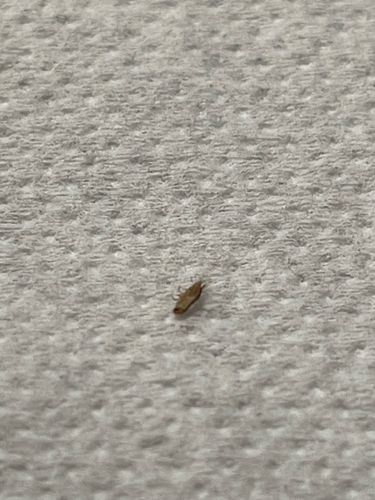Booklouse
Scientific Name: Psocoptera (various species)
Order & Family: Order: Psocoptera, Family: Liposcelididae (common indoor booklice)
Size: Typically 1-2 mm, very small and often translucent or pale brown.

Natural Habitat
Warm, humid environments, often found in books, papers, stored food products, and damp areas like bathrooms and kitchens. They thrive where mold and mildew are present.
Diet & Feeding
Microscopic mold, fungi, starch-based materials (like paper glue, bookbindings, wallpaper paste), dried plant matter, and cereals. They are scavengers.
Behavior Patterns
They are typically slow-moving and avoid light. They can multiply rapidly in favorable humid conditions. Some species are parthenogenetic, meaning females can reproduce without males, leading to quick infestations.
Risks & Benefits
Risks: Primarily a nuisance pest. They can cause damage to books, documents, and stored food products by feeding on mold or the materials themselves. They do not bite humans, spread diseases, or cause structural damage. Benefits: Generally none to humans, though in natural outdoor environments, they can play a small role in decomposition of organic matter.
Identified on: 9/9/2025